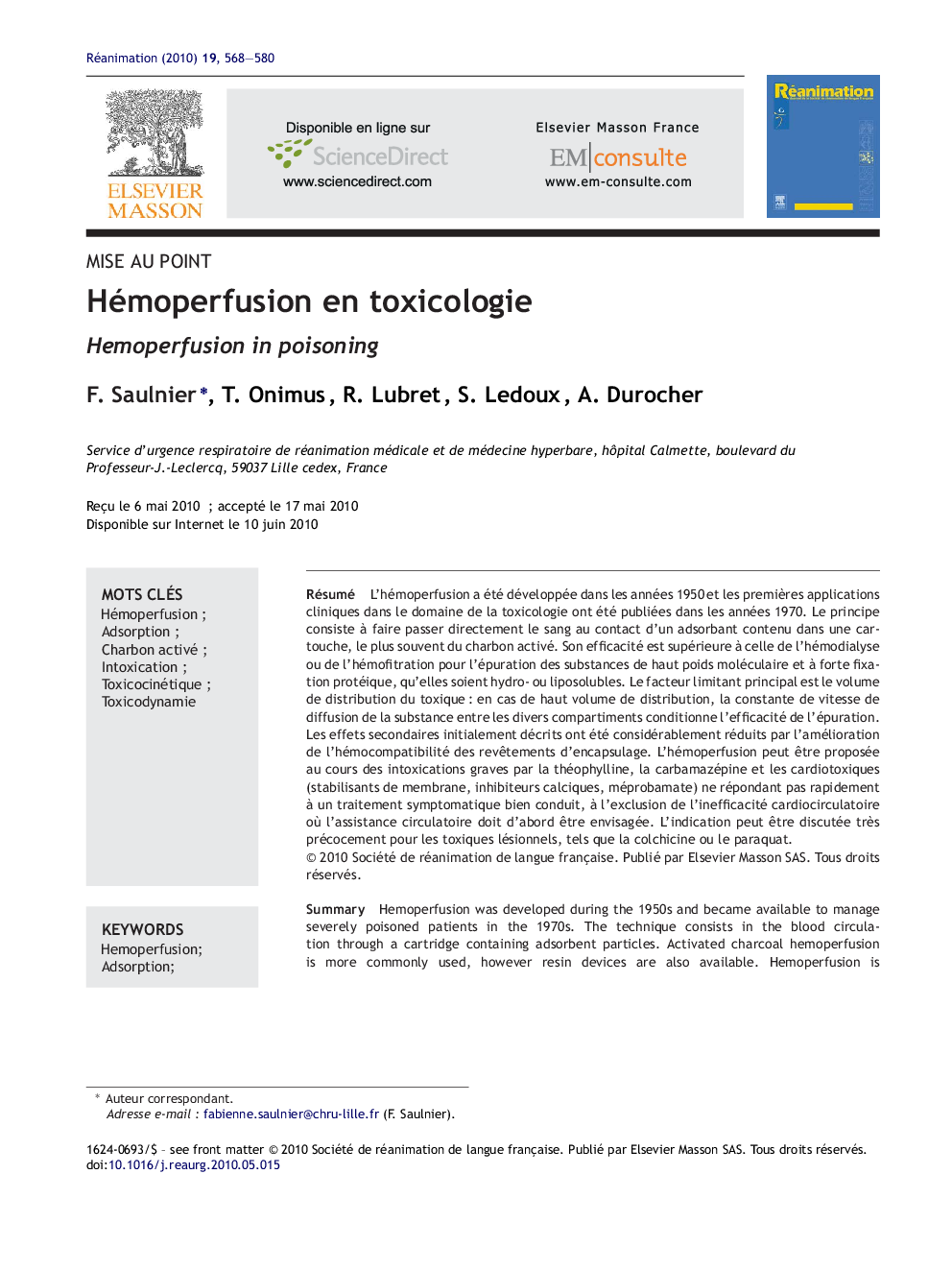| کد مقاله | کد نشریه | سال انتشار | مقاله انگلیسی | نسخه تمام متن |
|---|---|---|---|---|
| 2613164 | 1134829 | 2010 | 13 صفحه PDF | دانلود رایگان |
عنوان انگلیسی مقاله ISI
Hémoperfusion en toxicologie
دانلود مقاله + سفارش ترجمه
دانلود مقاله ISI انگلیسی
رایگان برای ایرانیان
کلمات کلیدی
موضوعات مرتبط
علوم پزشکی و سلامت
پزشکی و دندانپزشکی
طب اورژانس
پیش نمایش صفحه اول مقاله

چکیده انگلیسی
Hemoperfusion was developed during the 1950s and became available to manage severely poisoned patients in the 1970s. The technique consists in the blood circulation through a cartridge containing adsorbent particles. Activated charcoal hemoperfusion is more commonly used, however resin devices are also available. Hemoperfusion is more effective than hemodialysis or hemofiltration to remove lipid- or water-soluble drugs with high molecular weight and elevated protein binding rates. When the volume of distribution is large, drug removal could be limited if its affinity to the tissues is high with a slow tissue-to-blood transfer which depends on the intercompartment rate constant. Previous hemoperfusion devices produced significant side effects that have been overcome with the development of hemocompatible coating. Hemoperfusion may be used in severe life-threatening intoxications with theophylline, meprobamate, carbamazepine, membrane stabilizing agents, and calcium channel blockers, in addition to conventional supportive treatments, except in case of cardiac arrest for which cardiopulmonary bypass should be first considered. In case of toxicants that may induce systemic tissue damage, hemoperfusion could also be considered in the early course of poisoning.
ناشر
Database: Elsevier - ScienceDirect (ساینس دایرکت)
Journal: Réanimation - Volume 19, Issue 6, October 2010, Pages 568-580
Journal: Réanimation - Volume 19, Issue 6, October 2010, Pages 568-580
نویسندگان
F. Saulnier, T. Onimus, R. Lubret, S. Ledoux, A. Durocher,